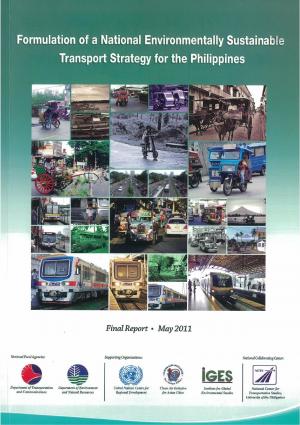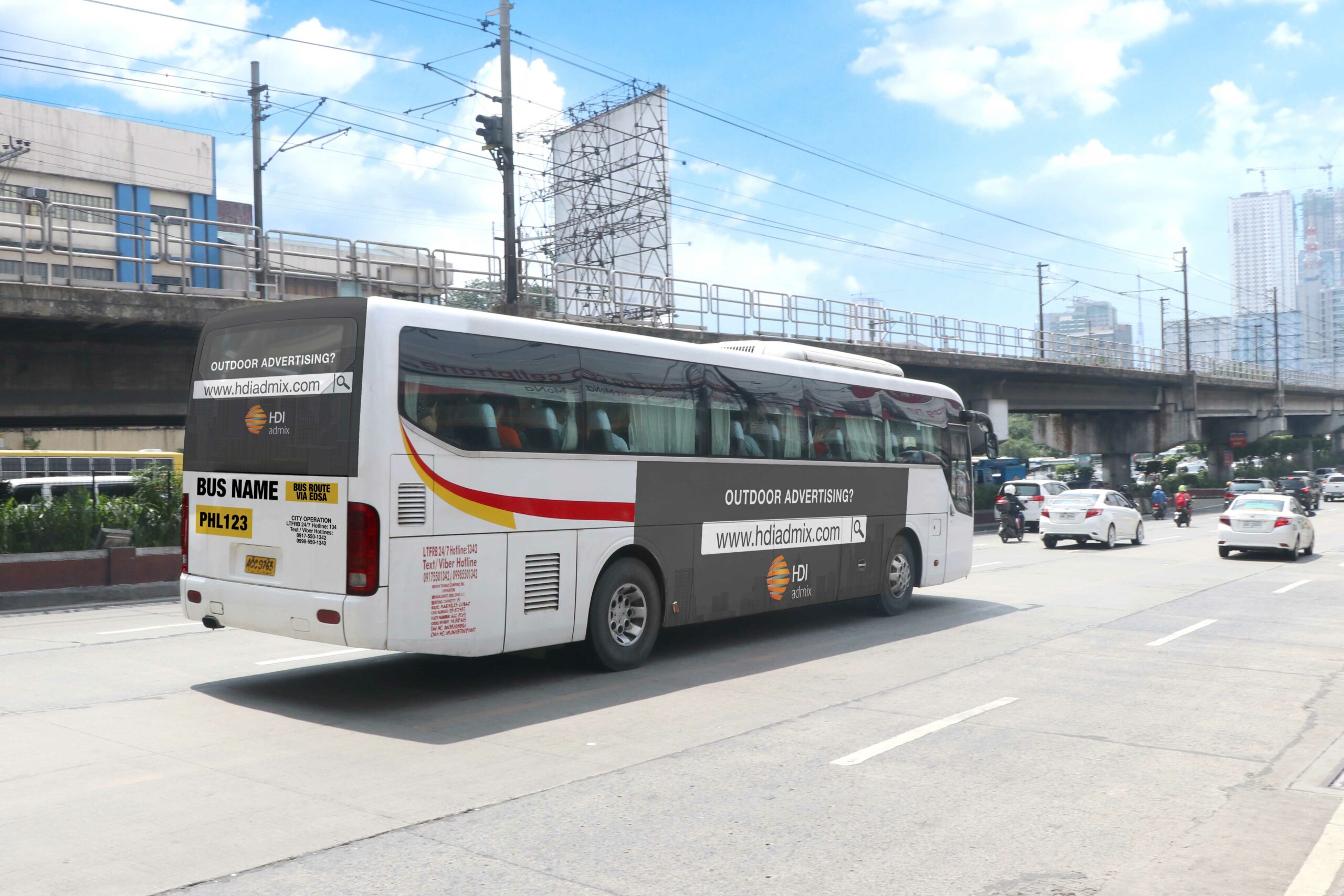Transit Advertising Philippines for Unmatched Brand Name Visibility
Transit Advertising Philippines for Unmatched Brand Name Visibility
Blog Article
Understanding the Role of Transportation Advertising And Marketing in Enhancing Brand Name Presence and Customer Involvement
Transportation marketing has arised as a crucial component in the advertising landscape, using distinct opportunities for brand names to raise their visibility and involve customers efficiently. With the capacity to reach a varied and captive audience during their day-to-day commutes, these advertising approaches are not merely concerning exposure; they have to do with producing purposeful links with potential consumers. As we explore the diverse benefits and cutting-edge techniques within transit advertising and marketing, it comes to be vital to consider how these elements jointly influence consumer understanding and actions, elevating concerns concerning their lasting effect on brand loyalty.
Interpretation of Transportation Marketing
Transportation marketing refers to the technique of advertising items, services, or brand names with promotions put in and around public transport systems. This type of advertising and marketing encompasses a selection of positionings, including posters on buses and trains, electronic displays at transit terminals, and covers on the exterior of vehicles. It intends to get to a diverse audience, profiting from the high foot traffic associated with public transportation.
Transportation marketing is tactically positioned to record the focus of commuters, who frequently invest substantial time taking a trip or waiting. By integrating advertisements right into the day-to-day routines of individuals, brand names can produce a long lasting impact and foster brand name recognition. The tool is specifically reliable in urban settings, where public transport is a main mode of traveling.
Furthermore, transit marketing can help with local targeting, enabling companies to get to certain demographics based on transportation paths and station areas. As metropolitan populations expand and using public transportation boosts, this marketing method has actually obtained importance as an important element of integrated marketing approaches. The dynamic nature of transit advertising, combined with its capability to engage customers in a captive atmosphere, emphasizes its relevance in contemporary advertising practices.
Advantages of Transportation Advertising
The efficiency of transportation advertising and marketing hinges on its ability to deliver a wide variety of advantages to brands looking for to boost presence and involvement. Among the primary benefits is the considerable reach it supplies; transit ads can efficiently target diverse demographics across city locations, reaching both commuters and pedestrians alike. This broad exposure substantially improves brand name recognition.
An additional advantage is the high regularity of impacts. As transportation automobiles take a trip along well-known courses and quit at numerous places, they produce repeated direct exposure that strengthens brand name messages. This frequency promotes familiarity, which is vital in customer decision-making.
Transportation marketing is likewise economical compared to other media platforms. Given its large reach and possibility for high impacts, brand names usually experience a reduced price per thousand impacts (CPM), optimizing their advertising budget.
Moreover, transportation ads can create a sense of community link. By straightening with local transportation systems, brand names can resonate with local target markets and foster a sense of neighborhood pride. This localized technique boosts brand loyalty and involvement, making transit advertising and marketing a compelling option for services intending to strengthen their presence in the market.

Efficient Approaches for Transportation Campaigns
To take full advantage of the influence of transportation projects, brands need to take advantage of calculated planning and execution customized to their target audience. Initially, identifying the market characteristics of the target market using public transportation is essential. This permits brands to produce personalized messaging that resonates with possible customers.
Following, selecting the best transportation mediums is crucial. Whether using bus covers, subway posters, or digital screens, each tool has one-of-a-kind advantages that can boost visibility. For example, vibrant visuals on bus covers can draw in attention, while electronic ads can be updated often to reflect prompt helpful site promotions.
In addition, integrating a natural branding technique throughout transit systems makes sure uniformity and strengthens the brand name's identity. Making use of remarkable taglines and attractive layouts will enhance brand name recall among travelers.
By utilizing these approaches, brands can successfully harness the capacity of transportation advertising, fostering higher awareness and connection with their target audience. Eventually, a well-executed transportation project can drive significant development in brand visibility and consumer interaction.

Measuring Effect and Engagement
In navigate here assessing the performance of transportation ad campaign, precise measurement of effect and engagement is important for brand names looking for to optimize their advertising and marketing strategies. Metrics such as reach, regularity, and impressions give fundamental information to assess presence. Examining these elements aids identify the number of potential consumers are subjected to the promotions during their day-to-day commutes.
Interaction can be more evaluated through customer interactions, such as internet site traffic, social media points out, and straight reactions to calls-to-action included in the ads. Making use of tools like QR codes or special URLs can assist in monitoring of consumer habits straight linked to transportation campaigns. Surveys and comments mechanisms likewise act as important approaches to gather qualitative data on customer perceptions and recall of the ad.
Moreover, progressed analytics and attribution versions can correlate transportation exposure with succeeding getting habits, offering understandings into the return on investment. By using a detailed method that incorporates qualitative and measurable actions, brands can establish a nuanced understanding of their transportation marketing influence. Eventually, this data-driven strategy enables brands to improve their projects, ensuring they resonate successfully with target market and improve total brand name visibility.
Instance Research Studies of Effective Campaigns
Successful transit advertising campaigns offer as compelling examples of just how efficient approaches can elevate brand exposure and involvement. Transit Advertising Philippines. One remarkable instance is the "I Love New york city" project, which transformed the city's picture and attracted countless travelers. By utilizing metro advertisements, billboards, and bus covers, the project produced a solid, natural brand name identification, leading to a significant uptick in tourist and regional company patronage
Another excellent project is Coca-Cola's "Share a Coke" initiative, which leveraged transit advertising to individualize the brand experience. By featuring preferred names on marketing materials throughout different transit systems, Coca-Cola More Help promoted a deeper psychological link with consumers, urging them to share their experiences on social media sites.
Furthermore, the "Got Milk?" campaign properly made use of mass transit ads to reach a wide audience, strengthening the message of the significance of milk in a balanced diet regimen. The project saw a measurable increase in milk intake in target demographics.
These study illustrate that when executed attentively, transit advertising can significantly boost brand exposure, foster consumer interaction, and drive quantifiable results, showing its vital role in modern-day marketing approaches. - Transit Advertising Philippines
Conclusion
In verdict, transportation marketing serves as a vital tool for boosting brand exposure and promoting customer engagement. Ultimately, the capacity to gauge involvement and assess successful instance research studies underscores the effectiveness of transit marketing in driving brand name loyalty and consumer interactions.
Transit marketing has actually emerged as a crucial component in the advertising and marketing landscape, using special chances for brands to boost their presence and engage customers properly.In addition, transit advertising can facilitate local targeting, enabling companies to get to certain demographics based on transit courses and terminal locations.In reviewing the performance of transportation advertising projects, precise dimension of influence and interaction is vital for brands looking for to optimize their advertising and marketing methods.Effective transit advertising and marketing campaigns offer as engaging examples of just how effective approaches can raise brand name exposure and involvement.In final thought, transportation marketing offers as an important device for enhancing brand name visibility and promoting customer engagement.
Report this page